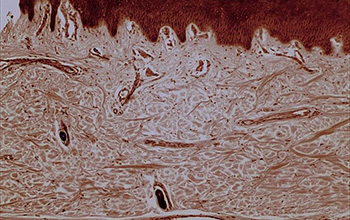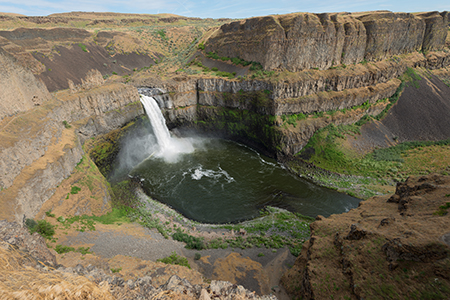搜索结果: 1-15 共查到“理学 Cooling”相关记录109条 . 查询时间(0.062 秒)


How humans evolved a super-high cooling capacity(图)
humans evolved super-high cooling capacity
2021/4/23
Humans have a uniquely high density of sweat glands embedded in their skin -- 10 times the density of chimpanzees and macaques. Now, researchers at Penn Medicine and other institutions have ...

中国地质大学科学技术发展院杨江海,杜远生等,地学院 Earth and Planetary Science Letters, Available online 13 April 2018, Early Wuchiapingian cooling linked to Emeishan basaltic weathering?(图)
峨眉山;大火;化学风化;全球;气候;变冷
2021/10/21
近日,地球科学顶级期刊《Earth and Planetary Science Letters》刊发了峨眉山大火成岩省喷发后的化学风化致使全球气候变冷的最新研究成果。该文第一作者、通讯作者为地球科学学院杨江海副教授。

Gases from ancient Inland Northwest volcanic eruptions blocked out sun,cooling planet(图)
Gases ancient Inland Northwest volcanic eruptions blocked out sun cooling planet
2017/10/25
The Pacific Northwest was home to one of the Earth’s largest known volcanic eruptions, a millennia-long spewing of sulfuric gas that blocked out the sun and cooled the planet, Washington State Univers...
中国地质大学科学技术发展院宋虎跃BGEG国家重点实验室 Geology (2017) Uranium and carbon isotopes document global-ocean redox-productivity relationships linked to cooling during the Frasnian-Famennian mass extinction
全球;变冷;事件;导致;生物;大灭绝
2021/10/21
近日,中国地质大学生物地质与环境地质国家重点实验室宋虎跃副研究员及合作者在国际地学领域权威期刊《GEOLOGY》上发表题目“Uranium and carbon isotopes document global-ocean redox-productivity relationships linked to cooling during the Frasnian-Famennian mass ex...
OPTO is organized into eight tracks. Choose a track and click to see the list of conferences.Review conference details by clicking on the titles below. These details include paper titles, authors, sch...
Demon-like Algorithmic Quantum Cooling and Its Realization with Quantum Optics
Demon-like Algorithmic Quantum Cooling Quantum Optics
2016/1/22
Simulation of the low-temperature properties of many-body systems remains one of the major challenges in theoretical 1–3 and experimental 4–6 quantum information science. We present, and demonstrate e...
Cooling of a channeled lava flow with non-Newtonian rheology: crust formation and surface radiance
Rheology Magmas Thermodynamics Lava flow Effusion rate
2015/8/27
We present here the results from dynamical and thermal models that describe a channeled lava flow as it cools by radiation. In particular, the effects of power-law rheology and of the presence of bend...
1,800 Years of Global Ocean Cooling Halted by Global Warming
1,800 Years Global Ocean Cooling Halted Global Warming
2015/9/9
Prior to the advent of human-caused global warming in the 19th century, the surface layer of Earth’s oceans had undergone 1,800 years of a steady cooling trend, according to a new study. Dur...
Molecular Phylogenetic Diversity and Spatial Distribution of Bacterial Communities in Cooling Stage during Swine Manure Composting
Diversity Restriction Fragment Length Polymorphism
2016/5/18
Polymerase chain reaction-restriction fragment length polymorphism (PCR-RFLP) and subsequent sub-cloning and sequencing were used in this study to analyze the molecular phylogenetic diversity and spat...
An experimental study of pyroxene crystallization during rapid cooling in a thermal gradient: application to komatiites
Pyroxene crystallization mattie rocks thermal gradient cooling rapidly komatiite lava flow
2015/1/6
To investigate the crystallization of pyroxene in spinifex-textured komatiites, we undertook a series of experiments in which compositions in the CaO-MgO-Al2O3-SiO2 CMAS system were cooled rapidly in ...
We examine the cooling radiation from forming galaxies in hydrodynamic simulations of the LCDM model (cold dark matter with a cosmological constant), focusing on the Lyα line luminosities of high-reds...
A common feature of the X-ray bubbles observed in Chandra images of some "cooling flow" clusters is that they appear to be surrounded by bright, cool shells. Temperature maps of a few nearby luminous ...
Using high-resolution cosmological simulations, we study hydrogen and helium gravitational cooling radiation from gas accretion by young galaxies. We focus on the He II cooling lines, which arise from...


